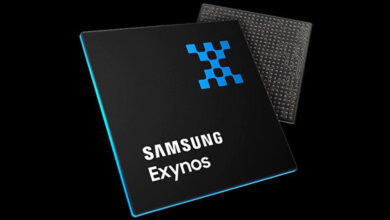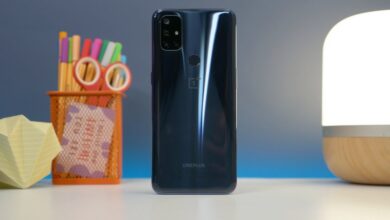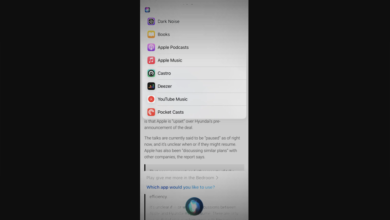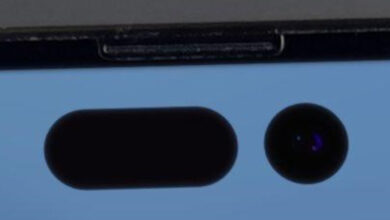Nothing Phone (1) vs Google Pixel 6a: What’s the difference?
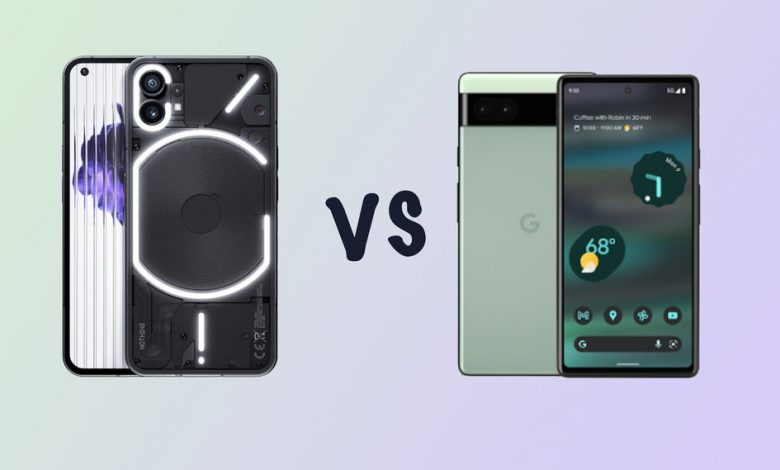
[ad_1]
(Pocket-lint) – Nothing revealed its first phone in the Phone (1) at an event on 12 July, just a couple of weeks ahead of when Google’s mid-range Pixel 6a is expected to hit stores.
Shaking up the mid-range market with a semi-translucent back, the Nothing Phone (1) will sit at the same price as the premium-looking Google Pixel 6a, but which should you buy?
We’ve compared the two handsets to help you work out which device is right for you. We’ve also compared the Nothing Phone (1) to the OnePlus Nord 2T in a separate feature, as well as the Samsung Galaxy A53 5G elsewhere.
Design
- Nothing Phone (1): 159.2 x 75.8 x 8.3mm, 193.5g
- Google Pixel 6a: 152.2 x 71.8. x 8.7mm, 178g
The Nothing Phone (1) offers a design that breaks away from the norm thanks to the semi-translucent rear that shows off some – but not all – of its internals. There are LEDs on the rear too, which make up the Glyph Interface, allowing you to customise them to notifications and the rear has a glass finish.
In the top left corner of the back, there are two camera lenses, while the front sees a flat display, under-screen fingerprint sensor and a punch hole camera in the top left corner. The edges are flat – like the iPhone 13 models – and the Nothing Phone (1) has an IP53 water and dust resistance and comes in black and white colour options.
The Google Pixel 6a has a slightly different design too, but it’s sleeker than the slightly ruggedness of the Nothing Phone (1). Like the Google Pixel 6 and 6 Pro, the Pixel 6a has a two-tone plastic rear, separated by the camera housing that spans the width of the device.
On the front, there’s a centralised punch hole camera at the top of the flat display and it too has an under-display fingerprint sensor. There are three colour options – black/grey, white/cream and green – and the Pixel 6a offers an IP67 water and dust resistance.
Display
- Nothing Phone (1): 6.55-inches, OLED, Full HD+, 60-120Hz
- Google Pixel 6a: 6.1-inches, AMOLED, Full HD+, 60Hz
The Nothing Phone (1) has a 6.55-inch flexible OLED display that offers a Full HD+ resolution. It delivers a pixel density of 401ppi, which is pretty standard for this end the of the market. What’s perhaps a little more unusual is the adaptive display, which offers between 60Hz and 120Hz.
The Pixel 6a has a 6.1-inch display, which is an AMOLED panel. It’s a little smaller than the Nothing Phone (1), though it too has a Full HD+ resolution, which means it squeezes a few more pixels in per inch at 431ppi.
The Pixel 6a has a standard 60Hz refresh rate, though it offers 24-bit colour compared to the Nothing Phone (1)’s 10-bit colour. The Pixel 6a also has Google’s Pixel always-on display feature, complete with At A Glance calendar/weather info and the Now Playing functionality, differentiating it a little in this section.
Hardware and specs
- Nothing Phone (1): Snapdragon 778+, 8/12GB RAM, 128/256GB storage, 4500mAh
- Google Pixel 6a: Tensor chip, 6GB RAM, 128GB storage, 4306mAh
The Nothing Phone (1) runs on the Snapdragon 778+ chipset, and there is a choice of 8GB of RAM with 128GB or 256GB of storage, or a 12GB of RAM model with 256GB of storage. You won’t find microSD on board for storage expansion, though Dual SIM is supported.
The Google Pixel 6a runs on Google’s in-built Tensor chip, which powers the Pixel 6 and Pixel 6 Pro. There’s 6GB of RAM and 128GB of storage, so the Nothing Phone (1) certainly plays the numbers game here, despite the Pixel 6a offering a flagship chipset.
In terms of battery capacity, the Nothing Phone (1) offers a 4500mAh battery that supports 33W wired charging, 15W wireless charging and 5W reverse wireless charging. The Google Pixel 6a has a 4306mAh, with support for 30W fast charging, though no wireless charging or reverse wireless charging.
When it comes to software, the Nothing Phone (1) and Google Pixel 6a run on Android, but Nothing has put the NothingOS over the top, while the Pixel 6a is stock Android with no bloatware. It means you’ll get a different user experience from these two devices, with the Pixel 6a being very pure, while the Nothing Phone (1) has some extras, like the Glyph Interface.
Cameras
- Nothing Phone (1): Dual 50MP rear camera, 16MP front
- Google Pixel 6a: Dual rear (12MP + 12.2MP), 8MP front
The Nothing Phone (1) offers a dual 50-megapixel rear camera made up of a main sensor, coupled with an ultra wide sensor. The main sensor has an f/1.88 aperture, OIS, EIS and it has a number of features like Portrait Mode, Beauty Mode, Night Mode, Extreme Night Mode and Google Filter.
The ultra wide camera has an f/2.2 aperture and a 114-degree field of view. There’s Night Mode on this sensor too, along with Macro and HDR. On the front, the Nothing Phone (1) has a 16-megapixel snapper.
The Google Pixel 6a has a dual 12-megapixel rear camera comprised of a 12-megapixel main sensor and a 12.2-megapixel ultra wide sensor.
Like the Pixel 6 and 6 Pro, the Pixel 6a’s camera system is capable of some pretty cool – almost magical – features. That means you get features Magic Eraser for removing unwanted objects in the background, Real Tone for ensuring all skin tones are displayed accurately and Face Unblur which essentially means no more blurry selfies. The Pixel 6a comes with an 8-megapixel front camera.
In terms of video, the Pixel 6a offers 4K recording up to 60fps, while the Nothing Phone (1) offers 4K up to 30fps.
Price
The Nothing Phone (1) will start from £399 in the UK and it will be available from 21 July.
The Google Pixel 6a will be available to order on 21 July, hitting shops on 28 July. It too costs £399.
Conclusion
The Nothing Phone (1) and Gogole Pixel 6a both offer a slightly different look compared to their competitors when it comes their design. The Nothing Phone (1) is a little more on the rugged side, while the Pixel 6a is sleeker, and both start at the same price, whilst also offering a decent set of specifications.
The Nothing Phone (1) wins when it comes to RAM, storage and battery capacities, and it also offers a larger and adaptive display, but the Google Pixel 6a has its advantages too, inlcuding the likelihood of an excellent camera offering – a department Nothing has yet to prove itself in.
Which device should you buy? That will come down to which design you prefer, and how important certain aspects like no bloatware, or a higher refresh rate display, or more RAM are to you.
Writing by Britta O’Boyle.
[ad_2]
Source link


